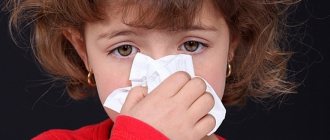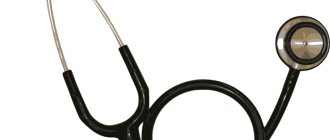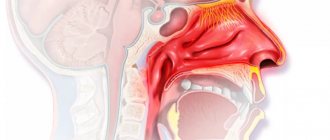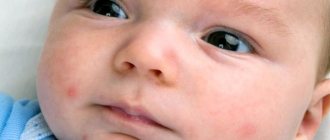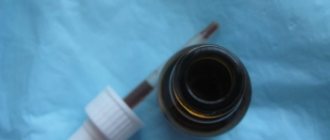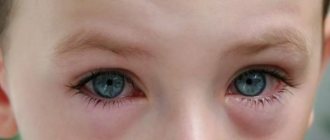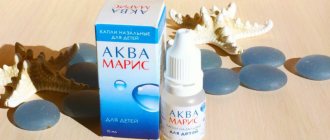A runny nose occurs very often in children and for various reasons. Many parents are ardent opponents of the use of synthetic drugs in the treatment of children and prefer traditional methods of healing. Aloe is a well-known remedy for children's colds, but before you put aloe juice in your child's nose, you need to understand whether this treatment for a runny nose is safe and effective.
The benefits of agave for a runny nose
The chemical composition of the pulp of aloe leaves contains many compounds beneficial to the body. Among them:
- Macro- and microelements.
- Beta carotene.
- Vitamins of group A, C, E.
- Phytoncides.
- Allantoin.
- Emodin.
- Rabarberon.
- Natolin.
- Aloin.
- Emoline.
- Homonataloin.
- Antrons.
- Chrysophanic acid.
- C-glycosylchromone-aloesin.
- Polyuronides.
- Phenols.
- Esters.
- Organic acids: succinic, malic, isocitric, citric, cinnamic, l-coumaric.
- Resinous substances (do not exceed 10% of the substance).
- Other biologically active components.
Due to its antibacterial and anti-inflammatory properties, an aqueous solution of aloe juice is often made to combat colds , including the runny nose. There is a general strengthening of immunity and a beneficial effect on the mucous membranes of the respiratory tract (can a cough in children be cured with aloe juice?).
Is it possible to put drops in the nose of babies?
Aloe juice, whether pure or diluted, contains a high concentration of various compounds. For children's mucous membranes, this can result in irritation and various troubles instead of a therapeutic effect. Therefore, you should know the following rules for using aloe to treat runny nose in children:
The frequency of use of aloe juice-based products for children is significantly lower than for adults.- This plant is not always able to cope with the symptoms of a runny nose.
- Not all recipes for adults are suitable for children.
- Adverse consequences of therapy may include an allergic reaction, ulceration or burn of the nasal mucosa.
- Be sure to ask your doctor about the effectiveness of aloe for a specific case, who will determine the advisability of such therapy.
The sensitivity of the nasal mucosa of infants is very high, so any means should be used very carefully. The safe concentration of agave juice in distilled water is 6 drops per 1 tbsp. l. , which is very little to provide a therapeutic effect.
Features of the course of rhinitis in children of the first year of life
As a rule, a runny nose is not a separate disease, but a symptom of viral or cold pathologies. Therefore, it is very important to determine the cause of the ailment and begin treatment in a timely manner. The development and course of a runny nose in newborns and children of the first year of life differ from rhinitis in adults. Due to the age-related characteristics of the structure of the respiratory tract of infants, the inflammatory process affects not only the nasal mucosa, but also spreads to the entire nasopharynx, provoking nasopharyngitis.
Also, because the opening of the eustachian tube, which connects the nasal cavity with the middle ear, is wider in children than in adults, infection can easily cause otitis media. In addition, in children under 10 years of age, the immune system continues to develop, and they are more likely than adults to be exposed to viral and bacterial diseases, and their risk of complications is higher.
Inflammatory processes accompanying rhinitis cause severe swelling of the mucous membrane. Due to the fact that the nasal cavity in infants is smaller than in adults, swelling almost completely blocks nasal breathing. Therefore, timely treatment of runny nose in children is an urgent need.
Therapeutic agents should be recommended by the attending physician. And even the use of herbal medicines that are safe, from the parents’ point of view, must be agreed with the pediatrician. Let's look at a few questions that responsible parents should have before using non-pharmacy products. Is it possible to drip aloe into a child's nose? At what age can you do this? Is there an age-specific dosage? What are the medicinal properties of agave?
How to dilute and instill correctly?
Pure plant juice cannot be injected into the nasal cavity, as there is a risk of burns to the mucous membrane and respiratory tract. To do this, the extract is diluted with boiled or distilled water or milk.
How to properly drip the product into your baby's nose? Therapy is carried out in compliance with the following rules:
- The mixture is instilled only into the nasal cavity; it is necessary to retain it here and prevent it from flowing into the throat.
- If drops get on the surface of the mucous membrane of the throat, you should immediately spit out the solution and repeat the procedure.
- A position that is comfortable for the child is chosen so that he can sit for several minutes without moving while the juice is absorbed into the nasal mucosa.
- It is allowed to use cotton swabs soaked in medicinal liquid for half an hour.
- The frequency of the procedure should not exceed 4-5 approaches per day.
- Before use, the nasal cavity is cleared of mucus.
For the best healing and healing effect, it is better to take the last dose immediately before bedtime.
To dilute the concentrate, you should adhere to the following recommendations:
- Depending on the age of the patient, the required concentration is selected: for children under 3 years old, it is better to take 2 or 3 parts of boiled water for 1 part of juice; for older children, dilution in the same proportions with distillate or boiled water is allowed.
- The water temperature should be slightly above room temperature so that the drops can be used immediately during the dilution process.
- Milk is sometimes used instead of water; it must first be boiled, cooled and strained. This product alleviates the discomfort when the solution gets on the nasal mucosa.
Possible side effects
Aloe drops should be used with caution in a child with allergies.
- The appearance of an allergic reaction. Possible swelling of the mucous membrane of the nasal passages, difficulty in nasal breathing, shortness of breath, and sneezing.
- Sinusitis. It can develop against the background of an inflammatory process that spreads. A headache, lack of nasal breathing, and painful sensations in the bridge of the nose may occur.
- Otitis, as a result of constant swelling of the auditory tube, difficult air circulation in the ears, and the spread of pathogenic microflora.
- Tonsillitis and pharyngitis. In a situation where the infection spreads to the throat if the child breathes through the mouth.
If you drip into your nose a product that was prepared from a freshly picked leaf and not diluted with water, it can cause redness, as it has strong biological activity. It is also possible that a burn to the mucous membrane or a severe allergic reaction may develop.
Temperature and dosage of solution
To prepare a solution based on aloe juice, several rules must be followed. This applies to temperature conditions, collection method, dilution, storage and direct use:
- Agave leaves have medicinal properties for children when the plant is at least 3 years old.
- The lower leaves are suitable because they are the most fleshy and therefore contain more juice and nutrients.
- For half a day, you should keep the collected leaves in the cold (an ordinary refrigerator with a temperature no higher than 5 ° C is suitable). This helps to activate macro- and microelements, as well as vitamins.
- Before cutting and squeezing juice from agave leaves, rinse them thoroughly in running water.
- For a baby, it should be diluted in a higher concentration; the use of concentrated juice is prohibited, as this will cause swelling, hyperemia, and irritation of the baby’s mucous membranes.
- For infants and children under 1 year of age, it is advisable to warm the solution to room temperature. This can be done by leaving the container with drops in a warm place for 1-2 hours before the procedure.
- A normal reaction to drops in a baby manifests itself in the form of an increased amount of mucous discharge from the nose, accompanied by lacrimation and sneezing during the first 20 minutes after manipulation.
- Store the solution in the refrigerator for no more than a day; prepare a fresh preparation for daily use.
- The juice is used no more than 4-5 times a day.
The main thing is to follow the rules!
You cannot use any aloe juice for nasal congestion. To prepare drops that have a therapeutic effect, you must follow the following recommendations:
The plant must be 3-8 years old. It is during this period that the concentration of nutrients reaches its maximum.
The source of juice will be the fleshy lower leaves, without dried areas. They must be cut as close to the plant trunk as possible, washed with warm boiled or purified water, wrapped in oiled paper and placed in the refrigerator for 12 hours.
Remove the spines, cut the leaf lengthwise and scoop out the pulp with a spoon. Squeeze the juice out of it using sterile gauze.
The liquid should be stored at home in a cool place, in a clean glass container with a lid. Its shelf life is only 24 hours, so do not prepare it for future use - the beneficial effect disappears over time.
By following these rules, you can independently prepare effective nasal drops for your child, which will significantly bring the moment of recovery closer.
How to use for infants?
Children under the first year of life are treated with agave juice very rarely. Doctors recommend using this remedy in exceptional cases. This is due to the high sensitivity of the baby’s nasopharyngeal mucosa to the aggressive components of the drug.
Treatment is carried out according to the scheme:
- The frequency of instillation is 3-4 times a day.
- Dosage – 2-3 drops of aloe with water in each nostril.
- From the second day, wait for the effect; after 3 days of no results, instillation of plant juice is canceled.
Read more about the use of aloe for a runny nose in a baby in a separate article.
The effect of plant juice on the nasal mucosa
Despite warnings, every second parent drips aloe into their children’s noses. This commitment to the product is based on its effect:
- rapid relief of swelling and inflammation of tissues;
- removal of mucus accumulated in the sinuses;
- elimination of bacteria (or viruses) that provoked pathology;
- relieving nasal congestion, restoring free breathing;
- protection of the mucous membrane from re-entry of pathogens or viruses;
- Once in the blood, the components of the plant juice contribute to the rapid elimination of toxins;
- mild effect that does not have a negative effect on other organ systems.
Restrictions on the use of aloe for runny noses in children are associated not only with possible allergies. The juice of the plant itself has an aggressive effect on the mucous membranes. Its increased concentration or excessively frequent use will lead to the fact that, while clearing the nasal passages and sinuses of mucus, the solution will damage the tissue.
Treatment of babies over one year of age
Children older than one year are treated with juice diluted in a ratio of 1 part squeeze to 3 parts distilled water, instead of which ordinary boiled liquid from the tap is suitable.
It should be preheated to ambient temperature. To quickly heat the mixture, you can use a water bath; the preparation is heated no higher than 20-25 ° C. Drops are dosed 3-4 units into each nasal cavity no more than 3-4 times a day. Therapy lasts up to 10-14 days.
Recipes for a runny nose - step-by-step instructions
There are many recipes based on agave juice for children. The most popular is mixing the juice of the plant with boiled or distilled water, honey, and oils (most often olive).
With distilled or boiled water
It is most often used to treat children under 10 years of age in a solution with water. It must be diluted in a proportion of 1 part plant juice to 3 parts clean warm liquid.
How to make drops:
- Cut off the leaves, select the most fleshy ones.
- Keep in the refrigerator for 12 hours.
- Rinse thoroughly in running water.
- Remove the spines and skin to extract the pulp.
- Place the mixture in cheesecloth and squeeze into a prepared container.
- Dilute with water using a measuring cup or pipette in a ratio of 1:3; it is more convenient to measure in drops.
- Store no more than a day in a cool place.
For children under 3 years old, 2 drops are dripped into each nostril. Children aged 3 to 10 years – 3-4 drops in each nasal cavity. For teenagers, the dosage increases to 5-7 drops. Position for instillation: half-sitting with an inclination towards the nostril in relation to which the procedure is being performed.
Emulsion with a mixture of oils
The plant juice is not often mixed with such drugs, since it can be used to treat rhinitis and other ENT diseases of bacterial origin in a mild form.
To prepare:
- Collect leaves from the bottom of the agave.
- Keep in the refrigerator for 6 to 12 hours.
- Peel the leaf or remove the thorns and finely chop.
- The pulp is placed in gauze and squeezed into a separate container.
- Combine the plant juice with linseed, burdock and olive oil in a ratio of 1 to 5.
- Warm to room temperature before use.
For children older than one year, instill 2-4 drops into each nasal sinus no more than 3-4 times a day.
The main effect of the emulsion is to maintain the required level of moisture in the mucous membrane , which facilitates the secretion of mucus. Before use, the nose is cleaned well. It is advisable to consult a pediatrician about the justification of this prescription for a specific form of runny nose.
Medicine preparation options
Drops can be prepared either with aloe alone or combined with other ingredients
- Aloe and honey. This remedy has opponents in the modern world, since it is believed that honey is an excellent breeding ground for pathogenic microorganisms. Other experts claim that if you mix honey with aloe juice and water, then this remedy will help not only with rhinitis, but also with sinusitis. It is important that the child does not have an allergic reaction to honey. So take each ingredient in equal proportions. First, mix honey with water, then add aloe juice.
- With olive oil. This product is suitable for children over two years of age. Heat the olive oil in a water bath, add aloe juice to it (take three parts oil, one part juice). Also used to lubricate the nostrils when crusts form.
- Agave, aloe, lemon, honey. Mix the ingredients in equal proportions. Use liquid honey, acacia honey is recommended.
- Aloe, honey, eucalyptus, rose hips. Mix all ingredients except eucalyptus in equal parts. The latter is added just a couple of drops. The mixed product is left to infuse for 15 minutes. Used to facilitate nasal breathing, also to reduce the amount of mucus secreted.
Pharmacy products
Among the most popular remedies for the common cold for children based on agave juice:
- Aqualor.
- Quicks.
- Naso spray.
- Vicks-active, etc.
Most modern products based on agave juice have antibacterial, vasoconstrictor and anti-inflammatory effects. The products are available in spray form, which makes it easier to use, allowing the drugs to be sprayed and evenly cover the child’s nasal mucosa.
Drops and sprays are recommended for children under 6 years of age, 1 injection or 2-3 drops in one nostril no more than 2-3 times a day. For older children and adolescents, a dose of 3-4 drops or 1 injection into 1 nasal cavity 3-4 times a day. The peculiarity of drugs from the pharmacy is their long-term storage - from a year to 2-3 years. “Live” aloe in ready-to-use solutions retains its healing properties for no more than 24 hours.
ethnoscience
Over many decades, healers have collected many traditional medicine recipes for preparing drops for the treatment of rhinitis in children. If parents don’t know what is the best way to rinse their child’s nose with a runny nose, herbalists will tell you. A remarkable healing effect is obtained by instilling 2-4 drops of a suspension of 1 part of fresh agave juice, diluted with 5 parts of premium olive, linseed or burdock oil. The advantage of the solution is that it does not allow the mucous membranes to dry out, saving them from injury and making it easier to blow your nose. It is recommended that you consult with your pediatrician to rule out sinusitis, in which the drug may be contraindicated. It is imperative to eliminate discharge from the sinuses so that the oils do not become a breeding ground for microorganisms.
Contraindications
Despite a number of advantages and beneficial properties of agave juice, it should not be used in the following cases:
- For children from birth to one year, the use of aloe juice solution is indicated only after consultation with a pediatrician.
- With the first negative manifestations on the composition of the plant, therapy is stopped. For those suffering from hypertension and cardiovascular diseases, the remedy is dangerous, since aloe has the ability to accelerate blood flow.
- The presence of an allergy to agave, which manifests itself in the form of skin rash, nausea, swelling, itching and burning of the mucous membrane.
- Viral runny nose.
Aloe or agave is a common houseplant. The presence of a rich complex of vitamins, macro- and microelements, acids and other compounds gives the juice many healing qualities. The use of plant-based drugs should be carried out with care, following dosages, frequency of instillation and general recommendations. It is best if the pediatrician examines the baby and tells him whether the aloe product will help. Any amateur activity can result in damage, burns or swelling of the nasal mucosa.
If you find an error, please select a piece of text and press Ctrl+Enter.
